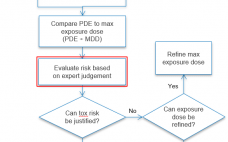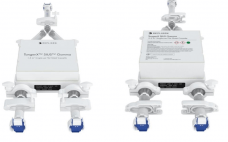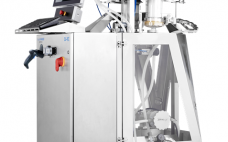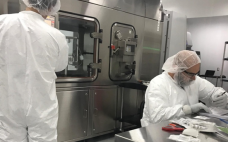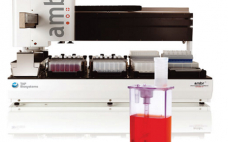This webcast features: Nigel Shipston, Director, Program Design, FUJIFILM Diosynth Biotechnologies A strategy for the development and scale of bioprocesses should be assessed at the earliest of stages. There are different challenges depending on the molecule and expression system. This webinar is designed to address some of the areas of consideration for successful development of bioprocesses for biologics and gene therapies. At the end of this webinar, you will be able to do a self-assessment to answer some critical questions:…
Ask the Experts
Ask the Expert: Scalable Purification Strategies for Viral Vectors and Vaccines
Viruses and virus-like particles (VLPs) raise unique challenges for downstream recovery and purification. In an Ask the Expert webinar on 19 September 2019, Mark Snyder (R&D applications manager of process chromatography at Bio-Rad Laboratories) discussed purification methods engineered to perform at manufacturing scales. Offering case studies featuring Nuvia resin and CHT Ceramic Hydroxyapatite chromatography support, Snyder emphasized that scalable media can help companies optimize downstream operations and address evolving manufacturing requirements. Snyder’s Presentation Tremendous growth in markets for vaccines and…
Ask the Expert: Risk-Based Approaches to Software Systems Compliance
Software risk management often seems synonymous with extra documentation. But during a 17 October 2019 Ask the Expert webinar, Martin Laferriere (director of information technology services at Avid Bioservices) explained how a thoughtful risk- assessment process at early project management stages can optimize software system validation efforts. Laferriere illustrated the benefits of developing strategic structures for documenting system use, hazards, and testing requirements. Such structures can help biomanufacturers clarify what records and functionalities they need to concentrate on to remain…
Ask the Expert: Rapid Virus Quantification in the Development and Manufacture of Emerging Therapies
The development and manufacture of emerging viral therapies is highly dependent upon accurate infective virus titers as well as total particle counts. But traditional quantification technologies have not kept pace with the needs of the viral vector market. Quantification methods based upon infectious particle counts can easily underestimate total particle counts. Indirect measurements such as enzyme-linked immunosorbent assays (ELISAs) and quantitative polymerase chain reaction (qPCR) are prone to overestimating the number of virus particles because they measure virus components to…
Case Study in Conducting Chemical Safety Assessments for Single- and Multi-Use Manufacturing Components
This webcast features: Dr. Sherry Parker, Senior Director, Regulatory Toxicology and Technical Services, WuXi AppTec Extractable and leachable studies of single- and multi-use manufacturing components should be followed up with a chemical safety assessment to understand the chemical risks based on the toxicity of the chemical, the dose and the exposure duration of the drug product, and the patient population for its intended use. This case study will illustrate considerations when conducting a chemical safety assessment, the pitfalls of having…
Closed, Single-Use TFF Assembly Makes Performance-Leading TangenX Cassette Technologies Even Easier to Use
This webcast features: Michael LaBreck, Global Bioprocess Sales Specialist, TangenX™ TFF Products, Repligen Corporation SIUS-Gamma TFF cassettes incorporate the performance-leading TangenX™ TFF membrane and cassette manufacturing technologies into a closed, gamma-irradiated, single-use assembly. Genderless, aseptic connections easily integrate into your current UF/DF flow path, and a library of 64 MWCO and surface area configurations provide rich process options. The closed format, leading TFF performance (flux, selectivity, reproducibility) of the TangenX membrane and manufacturing innovations that enabled the first single-use by…
Asahi Kasei Bioprocess’ Planova SU-VFC: Realizing Single-Use Technology in Virus Filtration
This webcast features: Brian Crawford, Director of Operations, Asahi Kasei Bioprocess America, Inc. By eliminating the need for clean-in-place, reducing demands on quality control, and optimizing product changeover times, single-use systems offer great benefit at pilot, clinical, and commercial production scales. The new Planova™ Single-Use Virus Filtration Controller (SU-VFC) from Asahi Kasei Bioprocess America, Inc. offers the hallmark consistency of Planova™ filters in a compact, fully automated single-use form factor with full 21 CFR Part 11 compliance for greater efficiency…
Discover Capsugel Dry-Powder Inhalation Capsule Portfolio
This webcast features: Claire Tardy, PhD, Research & Development Manager, Capsule Delivery Solutions, Lonza Pharma & Biotech Dry-powder inhalation (DPI) is a major drug delivery technology for the treatment of respiratory diseases and increasingly for systemic drug delivery. Providing a uniform dose in a portable, easy-to-use system, capsule-based DPI is a simple and cost-effective way to deliver medication via the pulmonary route. Within dry-powder inhalation application fields, Lonza offers the Capsugel® Zephyr™ Dry-Powder Inhalation portfolio: high-quality capsule solutions based on…
Aseptic Filling for Gene Therapies and Next-Generation Biologics Within Closed Robotic Workcells
This webcast features: Thomas Page, PhD, Vice President, Engineering and Asset Development, FUJIFILM Diosynth Biotechnologies Fujifilm Diosynth Biotechnologies (FDB) sought to “close the loop” by keeping all upstream and downstream aseptic processing operations within closed systems. The missing part was downstream, where FDB implemented a closed robotic filling workcell for manufacturing gene therapies. Workcells solve long-standing problems with sterility assurance, containment, and process control in aseptic filling. The knowledge developed by FDB during its implementation and early use of a…
Accelerating Timelines by Integrating Cell Line Development and Manufacturing Programs
This webcast features: Nicole Wakes, Group Leader, Cell Line Development, Abzena The start of cell line development represents a significant milestone for biologics innovators: It’s a commitment to a specific molecule and the start of the journey towards IND. By using the latest technologies such as automated multiple microscale bioreactors and high-throughput analytics, it is possible to interrogate clones more closely to determine productivity, manufacturability, and performance at scale and at an early stage. In addition, the data generated can…


